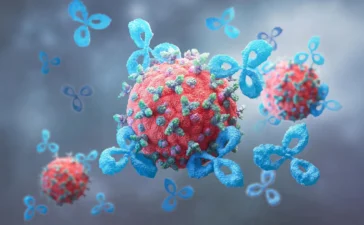Fast-charging lithium-ion batteries are ubiquitous, powering everything from cellphones and laptops to electric vehicles. They’re also notorious for overheating or catching fire.
Now, with an innovative computational model, a University of Wisconsin-Madison mechanical engineer has gained new understanding of a phenomenon that causes lithium-ion batteries to fail.
Developed by Weiyu Li, an assistant professor of mechanical engineering at UW-Madison, the model explains lithium plating, in which fast charging triggers metallic lithium to build up on the surface of a battery’s anode, causing the battery to degrade faster or catch fire.
This knowledge could lead to fast-charging lithium-ion batteries that are safer and longer-lasting.
The mechanisms that trigger lithium plating, until now, have not been well understood. With her model, Li studied lithium plating on a graphite anode in a lithium-ion battery. The model revealed how the complex interplay between ion transport and electrochemical reactions drives lithium plating. She detailed her results in a paper published on March 10, 2025, in the journal ACS Energy Letters.
“Using this model, I was able to establish relationships between key factors, such as operating conditions and material properties, and the onset of lithium plating,” Li says. “From these results, I created a diagram that provides physics-based guidance on strategies to mitigate plating. The diagram makes these findings very accessible, and researchers can harness the results without needing to perform any additional simulations.”
Researchers can use Li’s results to design not only the best battery materials — but importantly, charging protocols that extend battery life.
“This physics-based guidance is valuable because it enables us to determine the optimal way to adjust the current densities during charging, based on the state of charge and the material properties, to avoid lithium plating,” Li says.
Previous research on lithium plating has mainly focused on extreme cases. Notably, Li’s model provides a way to investigate the onset of lithium plating over a much broader range of conditions, enabling a more comprehensive picture of the phenomenon.
Li plans to further develop her model to incorporate mechanical factors, such as stress generation, to explore their impact on lithium plating.
You Might Also Like
Eating more vitamin C can physically change your skin
Scientists at the University of Otago, Faculty of Medicine -- Christchurch Ōtautahi, have identified a direct connection between how much...
MIT scientists strip cancer of its sugar shield
A research team from MIT and Stanford University has developed a new technique designed to push the immune system to...
This “mushroom” is not a fungus, it’s a bizarre plant that breaks all the rules
In the damp shade beneath moss-covered trees, high in the mountains of Taiwan and mainland Japan or deep within the...
A quantum mystery that stumped scientists for decades is solved
A global research team led by Rice University physicist Pengcheng Dai has verified the presence of emergent photons and fractionalized...









